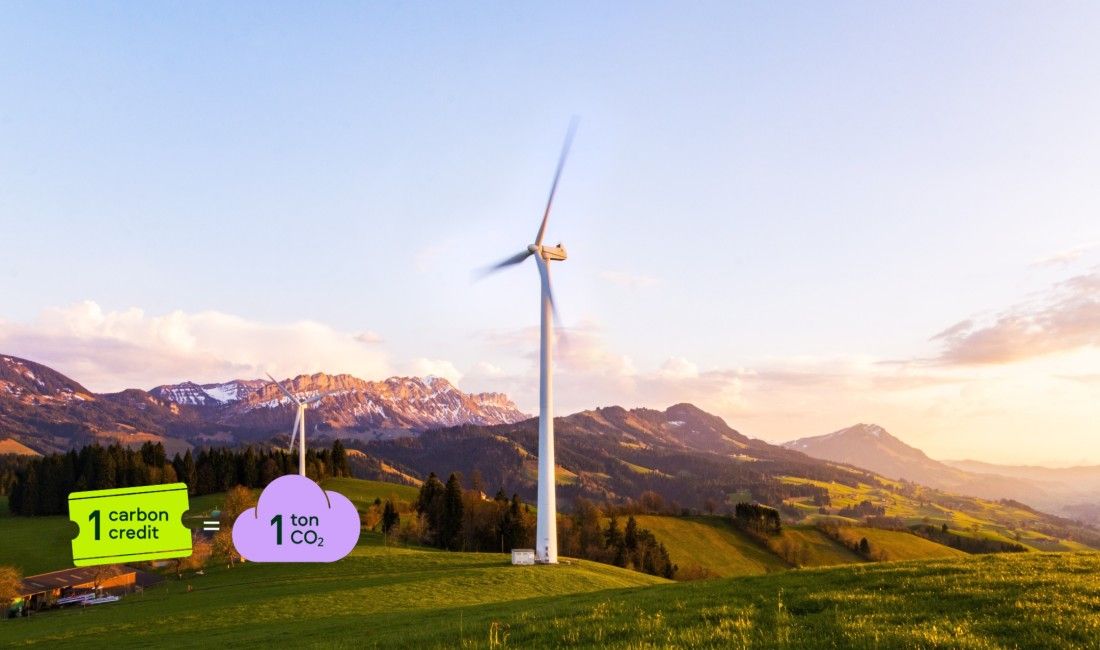How to Invest and make Money with Carbon Credits
Tesla has made close to $1.5 billion last year selling carbon credits alone. This is 3% of Tesla's total revenue in 2021, according to the company.

Tesla has made close to $1.5 billion last year selling carbon credits alone. This is 3% of Tesla's total revenue in 2021, according to the company's financial statements.
Carbon credits are a type of environmental commodity that can be traded to offset greenhouse gas emissions. One carbon credit is equivalent to one tonne of carbon dioxide, and they can be bought and sold in order to help businesses and individuals offset their emissions.
There are a few different ways to invest in carbon credits, and the most common one is through the purchase of voluntary credits. These are typically bought by businesses or individuals who want to offset their emissions but are not required to do so by law. The price of voluntary credits is determined by the market, and they can be bought and sold on various exchanges.
Investing in carbon credits can be a great way to offset your emissions and help fight climate change. However, it is important to do your research and carefully consider your investment options before making any decisions.
In this article, we will discuss what carbon credits are, how you can make money trading them, and how companies like Tesla are making billions of dollars selling them.
What are carbon credits and how do they work?
Carbon credits are a way for companies and organizations to offset their emissions of greenhouse gases. They allow polluters to continue emitting carbon dioxide and other greenhouse gases.
Carbon offsets are often used as an alternative to reducing pollution directly. For example, an airline might buy carbon credits instead of putting new technology on its planes that would allow them to run more efficiently.
The United Nations Clean Development Mechanism (CDM) allows industrialized countries to invest in projects in developing countries that reduce greenhouse gas emissions by avoiding deforestation or by converting methane into electricity.
The idea is that companies that emit more carbon than they are allowed must buy extra "carbon credits" from those who have reduced their emissions by more than they have been allocated under the treaty's limits.
Basically, for every metric ton of CO2 that is captured, reduced, avoided, or destroyed, one carbon credit is assigned and vice versa.
Here is how Google is offsetting its carbon emissions using Carbon Credits

Who is eligible to get Carbon Credits?
Because all soil can store carbon, farmers and other landowners are able to receive carbon credits. Each ton of CO2 that is captured or reduced on a landowner's property qualifies them for one carbon credit. When a landowner decides to provide land for carbon credits, they agree to certain practices such as not chopping down trees that store carbon for timber and practicing regenerative agriculture to maximize carbon storage.
How much is a single carbon credit worth?
A carbon credit is a generic term for any tradable certificate or permits representing the right to emit one tonne of carbon dioxide or its equivalent of a Greenhouse gas. They were first established as a way to help countries meet their emissions targets under the Kyoto Protocol, and have since become a key part of the global effort to tackle climate change.
So, how much is a carbon credit worth? The answer is that it depends on the market and the location where the credit is being traded. Generally speaking, a carbon credit is worth between $70 and $90. However, the exact price will fluctuate based on a number of factors.
Types of carbon emission offsetting credits
There are two main types of carbon credit:
Carbon offsetting projects: These are projects that aim to reduce or eliminate carbon emissions by investing in environmental-friendly technology. For example, you may buy a solar panel on your roof and sell the electricity back to the grid. The money received from selling the electricity generates income, which can be used to buy carbon credits.
Carbon trading programs: A government or company sets up a cap-and-trade system that limits the amount of carbon dioxide (CO2) released into the atmosphere by allowing businesses and consumers to buy and sell carbon credits based on set limits on CO2 emissions. The idea is that this will create an incentive for companies to reduce their CO2 output because they can sell unused credits if they exceed their limits.
“We are the first generation to feel the effect of climate change and the last generation who can do something about it.
Barack Obama, Former US President
Current Market Value of Carbon
In 2021, the value of the world's carbon market increased by 164% to a record high of 750 billion dollars. This expansion was primarily brought on by an uptick in the demand for carbon permits, which resulted in skyrocketing costs.
Carbon trading is the buying and selling of credits that grant a business or other organization, like a power station, permission to emit a specific volume of carbon dioxide. The largest carbon market in terms of value is the Emission Trading System of the European Union, which in 2021 accounted for around 90% of the market's overall size.
Annual CO2 emissions worldwide in billion metric tons

How to Invest in Carbon offset Credits?
There are a few different ways to invest in carbon offset credits, and the best option for you will depend on your individual goals and circumstances. However, some common ways to invest in carbon credits include:
#1 Buy shares of eco-friendly companies
In recent years, there has been a growing trend of investors looking to put their money into eco-friendly companies. This is because many people are becoming more and more aware of the need to protect the environment.
There are 2 strategies you can follow. First, pick a handful of stocks you think will fit in your portfolio, or go the saver route by investing in an environmentally friendly ETF.
Here is a list of publicly Traded Companies Fighting Climate change split by industry:
Wind Power
With a 75-fold increase in the previous 20 years, wind power is one of the fastest-growing renewable energy sources.
- General Electric (GE)
- Siemens Gamesa Renewable Energy (GCTAY)
- NextEra Energy Partners (NEP)
Solar Energy:
Solar energy in the United States is booming. In 2021, the solar industry generated nearly $33 billion of private investment in the American economy. The cost to install solar panels has dropped by more than 60% over the last decade, leading the industry to expand into new markets and deploy thousands of systems nationwide.
- Canadian Solar Inc. (CSIQ)
- JinkoSolar Holding Co. Ltd. (JKS)
- First Solar Inc. (FSLR)
Big Tech:
The world’s biggest tech companies are coming out with bold commitments to tackle their climate impact.
- Microsoft
- Apple
Carbon Credit ETFs:
- KraneShares Global Carbon Strategy (KRBN)
- KraneShares California Carbon Allowance Strategy (KCCA)
- iPath Series B Carbon ETN (GRN)
#2 Buy into Carbon via Blockchain
BETACARBON lets you buy and sell credit units 24/7 with an investment of as little as $1.
The Australian Startup founded by Guy Dickinson converts carbon-offsetting credit units into Carbon Tokens tradeable on the blockchain. One token equals 1kg of captured CO². The price of the BCAU token sits at around 3 cents.




